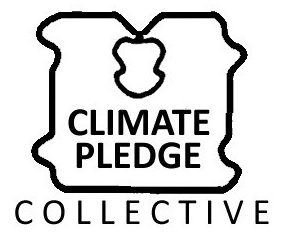
When TD made their net-zero 2050 announcement last year, we said it was a gamechanger AND a greenwash. A gamechanger because one of the big Canadian banks was finally taking responsibility for the massive climate impacts of their loans and investments. A greenwash because the announcement included no commitments to bring down lending in the near future. Unfortunately for RBC, and for TD too for that matter, what was a gamechanger last year is now just another generic greenwash. We know the banks are responsible; now we need to know what they’re going to do about it.
Let’s look at the specifics:
“RBC today announced progress on its climate strategy with an increased commitment to mobilize $500 billion in sustainable finance by 2025. RBC’s initial commitment of $100 billion in sustainable financing was achieved in 2020. In addition to setting an expanded sustainable financing target, RBC committed to:
- Net-zero emissions in its lending by 2050, aligned with the global goals of the Paris Agreement
- Joining the Partnership for Carbon Accounting Financials (PCAF) and RMI’s Center for Climate-Aligned Finance
- Measuring and reporting financed emissions for key sectors starting in our 2022 Task Force on Climate-related Financial Disclosures (TCFD) Report
- Setting interim targets to reduce financed emissions and building out climate-related stress testing programs at future dates
- Achieving net-zero emissions in its global operations annually; reducing greenhouse gas (GHG) emissions by 70% and sourcing 100% of its electricity from renewable and non-emitting sources both by 2025
Announcements about how much they’re investing in decarbonization aren’t very meaningful; they could probably make similarly impressive sounding claims about housing or agriculture or any other large industry. Banking itself isn’t very carbon-intensive, so bringing down their own emissions, while commendable, isn’t particularly impressive. The PCAF and TCFD commitments are good things, but it’s startling that RBC apparently hasn’t even been monitoring the emissions it is financing until now and that this reporting won’t be available until next year! To read the actual RBC Climate Report, which is mostly just a collection of logos, go here: http://www.rbc.com/community-sustainability/_assets-custom/pdf/RBC-Climate-Blueprint.pdf
The only commitment that is actually about the SIZE of their loans to the fossil fuel industry is this:
“Net-zero emissions in our lending by 2050, beginning with measuring and reporting our financed emissions for key sectors in our 2022 TCFD Report.”
The problem is there are no near term targets whatsoever. Lending happens before projects are even built and most projects are operational for decades AFTER their loans are repaid — that’s when fossil fuel companies make their profits.
Let’s look at an actual loan for an actual project to see why this is so problematic. Enbridge’s Line 3 Replacement Project will replace and expand the existing Line 3 which pumps tar sands oil and began operating in 1968. The new pipeline will bring the route’s current capacity up from 390,000 barrels/day to 760,000 barrels/day. If the last pipeline has been operational for fifty years, we can expect this pipeline to STILL BE OPERATING IN 2070 even though Enbridge will have repaid its loans in full long before that time. While Enbridge also claims it will be ‘net-zero 2050,’ their pledge doesn’t include ‘scope 3’ emissions (source) which are the emissions from the actual oil and gas they are selling and transporting…. you can probably see where we’re going with this… And this a project that RBC first got involved with years ago. What about loans they make now? Or ten years from now?
The bottom line is: any loans RBC makes now or in the next few years will drive up emissions until 2050 and beyond. To get net-zero emissions in 2050, RBC has to make nearly zero fossil fuel loans starting right now.

A good post. Thank you 😊
LikeLike